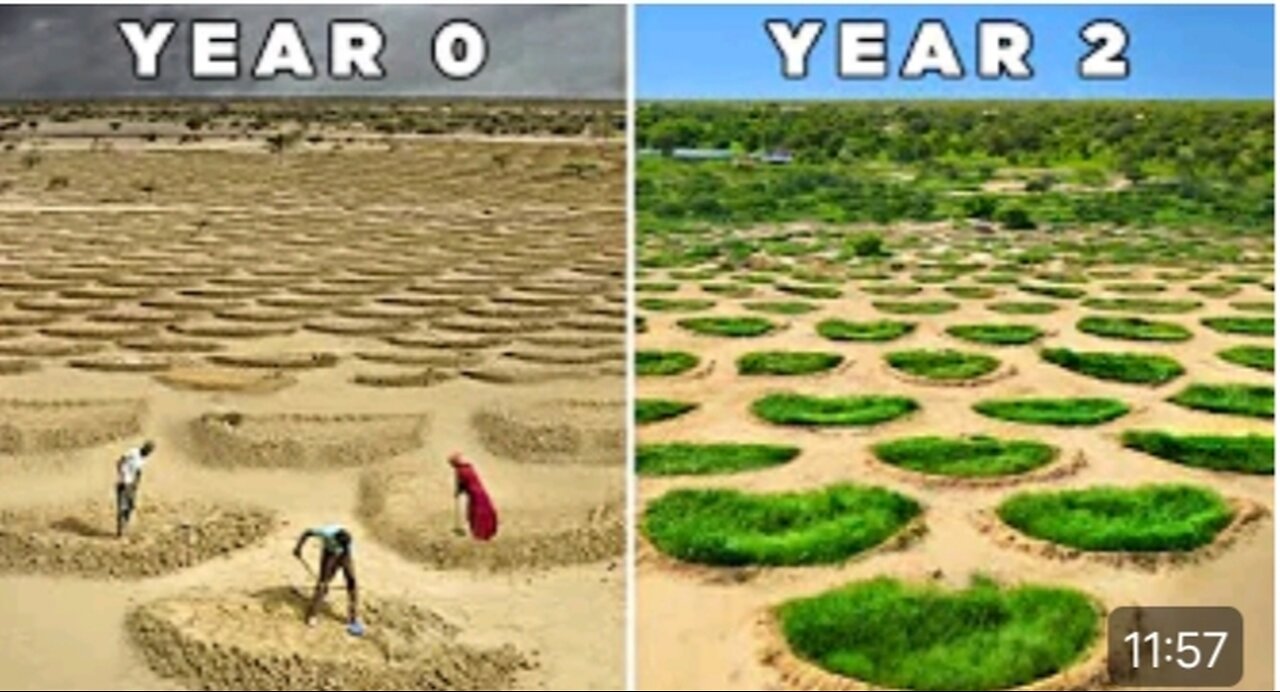Premium Only Content

How The UN is Holding Back SAHARA Desert
How the UN is Holding Back the Sahara Desert: A Comprehensive Overview
The Sahara Desert, one of the largest and harshest deserts in the world, has been expanding steadily for decades. This phenomenon, known as desertification, poses a significant threat to the livelihoods of millions of people across Northern Africa. However, the United Nations (UN) has been at the forefront of various initiatives to combat desertification and help slow the Sahara's encroachment. Through international collaborations, funding, and targeted programs, the UN plays a critical role in the fight against the desert's growth.
1. The United Nations Convention to Combat Desertification (UNCCD)
The UNCCD, established in 1994, is the primary international agreement dedicated to addressing desertification, land degradation, and drought. The convention brings together 197 countries, focusing on sustainable land management (SLM) and reversing desertification's impacts. By creating strategies for soil conservation, water management, and reforestation, the UNCCD aims to protect vulnerable regions, particularly in Africa, from further desert encroachment.
Key Programs under UNCCD:
Great Green Wall Initiative: One of the most well-known projects aimed at combating desertification, the Great Green Wall is a pan-African effort to plant a mosaic of trees across the Sahel region. The initiative is intended to restore 100 million hectares of land by 2030, providing economic, environmental, and social benefits to the communities that live there.
Desertification and Land Restoration Projects: The UN supports various restoration projects, ranging from reforestation efforts in Chad and Niger to innovative water-saving agricultural techniques in Mali and Senegal. These projects focus on sustainable farming practices, land restoration, and empowering local populations to manage natural resources.
2. International Collaboration and Funding
Through financial and technical support, the UN helps countries affected by desertification develop long-term solutions. International organizations like the Global Environment Facility (GEF) and the Green Climate Fund (GCF) contribute funding for programs aimed at sustainable development, climate adaptation, and land restoration.
The UN works closely with regional organizations like the African Union (AU) and the Arab Maghreb Union (UMA) to create region-specific solutions. These collaborations are vital for addressing the underlying causes of desertification and coordinating responses to mitigate its effects.
3. Promoting Sustainable Land Management (SLM)
One of the UN's major strategies is promoting SLM practices that conserve soil and water while fostering agricultural productivity. Techniques like agroforestry, crop rotation, and the use of drought-resistant plant species are being introduced to mitigate soil erosion and desertification. These practices are helping to regenerate the land and increase food security in affected regions.
4. Climate Change Mitigation
The expansion of the Sahara is often exacerbated by climate change. The UN has placed significant emphasis on mitigating the impact of climate change on desertification, particularly in Africa. Initiatives such as carbon sequestration through tree planting and sustainable agriculture are not only helping to curb desertification but also contribute to global efforts to reduce greenhouse gas emissions.
5. Education and Community Empowerment
The UN recognizes the importance of involving local communities in the fight against desertification. By providing education and training, the UN helps local populations understand the long-term consequences of land degradation and equips them with the skills to implement sustainable farming practices. Through grassroots engagement, the UN ensures that solutions are adapted to local conditions and that communities can maintain these efforts independently.
6. The Role of Technology and Innovation
In addition to traditional methods, the UN is leveraging technology to combat desertification. Drones, satellite imagery, and GIS (Geographical Information Systems) are used to monitor land conditions, track the progress of reforestation efforts, and assess the effectiveness of soil management techniques. Technological innovations help make desertification control efforts more efficient and targeted.
7. Building Resilience to Drought
Drought is one of the key contributors to the Sahara's expansion. The UN's drought resilience programs focus on improving water management and ensuring that communities in the Sahel and other arid regions can cope with water shortages. Techniques like rainwater harvesting, constructing water reservoirs, and improving irrigation systems help communities survive during drought periods.
Conclusion
The UN's role in holding back the Sahara Desert is multifaceted, ranging from international agreements and funding mechanisms to local community empowerment and technological innovations. Through coordinated global efforts, the UN is helping vulnerable regions of Northern Africa fight desertification and its far-reaching consequences. While challenges remain, the international community's combined efforts offer hope for mitigating the Sahara's expansion and improving the lives of millions.
---
Hashtags:
#UN #SaharaDesert #Desertification #GreatGreenWall #UNCCD #SustainableDevelopment #ClimateChange #LandRestoration #GreenClimateFund #SoilConservation #Agroforestry #DesertificationPrevention #SustainableLandManagement #WaterManagement #DroughtResilience #Africa #EnvironmentalProtection #GlobalCollaboration #ClimateAction #TechnologyForGood
-
 1:33:20
1:33:20
Dear America
3 hours agoGUEST: ERIC TRUMP! Dems ADMIT to Shutdown! + Feds Move to Tennessee!!
70K30 -

Matt Kohrs
12 hours agoROCKETING TO NEW HIGHS 🚀🚀🚀 (Stock Market Open) || Live Trading Futures & Options
12.6K2 -
 LIVE
LIVE
Wendy Bell Radio
6 hours agoDemocrats Are Getting CLOBBERED
7,491 watching -
 LIVE
LIVE
LFA TV
5 hours agoLIVE & BREAKING NEWS! | THURSDAY 10/2/25
4,213 watching -

Chad Prather
15 hours agoWhen God Delays: Trusting Jesus in the Waiting Room of Life
38.5K6 -
 2:00:39
2:00:39
The Chris Salcedo Show
14 hours ago $8.74 earnedThe Democrat's Schumer Shutdown
32.2K5 -
 30:32
30:32
Game On!
19 hours ago $3.73 earned20,000 Rumble Followers! Thursday Night Football 49ers vs Rams Preview!
40.2K4 -
 1:26
1:26
WildCreatures
14 days ago $4.13 earnedCow fearlessly grazes in crocodile-infested wetland
40.8K6 -
 29:54
29:54
DeVory Darkins
1 day ago $18.36 earnedHegseth drops explosive speech as Democrats painfully meltdown over Trump truth social post
92.6K83 -
 19:39
19:39
James Klüg
1 day agoAnti-Trump Protesters Threaten To Pepper Spray Me For Trying To Have Conversations
52.7K30